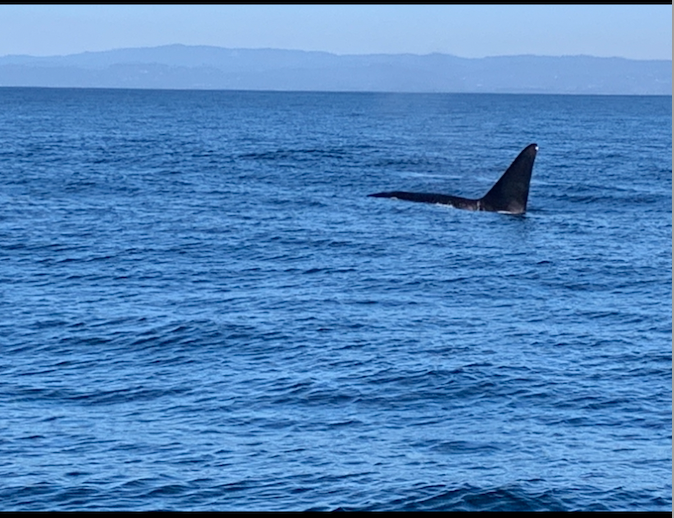Like navigating the ocean, piloting a three-week Sophomore College (SoCo) class centered around working on a ship can be unpredictable and tumultuous. Ample opportunity exists for plans to change — especially when the ship is not there.
The Western Flyer, a historic ship famed for use by John Steinbeck in the 1940s, was expected to arrive in Monterey Bay in July. But two months later, in early September, it remained docked in Seattle for maintenance.
For participants in the SoCo class in Monterey Bay (OCEANS 10SC) — 11 students, two Sophomore College Advisors and their professor — this meant a last-minute improvisation. Finding themselves with neither a ship nor its instruments, which would have included a water column profiler and a sonar unit, the group took a detour to Home Depot and got crafty onboard the whale-watching boat the New Horizons instead.
The course, which ran from Sept. 4 to Sept. 22, was led by professor of oceans William Gilly, whose research includes the chromatophores and escape responses of squids at the Hopkins Marine Station.
Gilly said that he had expected last-minute spontaneity due to the nature of the course.
“You can’t just count on having beautiful, sunny, calm weather,” Gilly said. “I think we all gained a very good understanding of how difficult it is to do work at sea, how challenging it is … but I truly believe that uncertainty is what drives exploration.”
The interdisciplinary course included lessons about the complex history of Monterey Bay, discussions about the area’s rich and diverse marine biology and a field trip to the home of renowned Carmel poet Robinson Jeffers. On board the New Horizons, students participated in hands-on activities, including whale watching, photographing birds and fishing for their own dinner.
Students also created final projects based on the course material and their own academic interests, which ranged from management science and engineering to international relations.
After repeatedly observing a sea lion violently beating a sunfish on the surface of the water, Killian Sullivan ’26, a management science major, chose to research the phenomenon further for his final project. Using a remotely operated vehicle (ROV) to assess the situation from underwater, Sullivan was able to identify the phenomenon as a feeding pattern in which the sea lion would beat the sunfish to death, a process necessitated by the fish’s otherwise impenetrable skin.
“They’ll find a sunfish, tear the fins off and leave it on the surface,” Sullivan said. “Then they’ll go hunt, and if they find nothing better, they’ll come back to the sunfish.”
For her final project, Dani Gonzalez-Gaubeka ’26, a prospective international relations major, chose to research the geographical history of Chinese fishing villages in Monterey Bay. Drawing information from photographs and documents, Dani created a map of the region encompassing the Hopkins campus, the Monterey Bay Aquarium and parts of the city.
“Maps tell such interesting stories, not only about the land that they represent but also about who makes those maps, what biases influence them, what’s shown and what isn’t shown,” Gonzalez-Gaubeka said. “I really enjoyed being able to compile the academic and visual information I’d gotten into a final product.”
Students also formed a strong sense of camaraderie within the small class, a core tenet of the program’s design. Sophomore College Advisor Dylan Hyun ’24 recounted the receptive and compassionate nature he witnessed while helping lead the trip.
“It was really great to see the kinds of conversations that people would have outside of class time that were related to the course material, and also just the friendliness and bond that formed just by virtue of being stuck on a boat together,” Hyun said.
